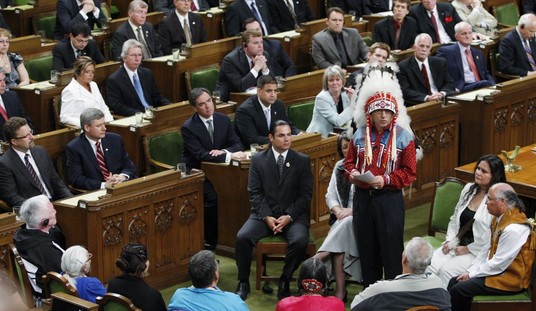U.S. officials and experts do acknowledge an Egyptian connection to the Benghazi attacks. They’ll point to what they call a ragtag group of jihadists, led by Muhammad Jamal Abdo Al-Kashif (aka Abu Ahmad), known as the “Jamal network.” However, the U.S. administration downplays this Egyptian connection, whereas several Arabic-language sources reveal a much larger connection. It is significant to point out that the first attack against the U.S. embassies on September 11, 2012, happened in Cairo. Egypt was the spark and Egyptians were the agents of both attacks.
Al-Kashif had been locked up in one of Egypt’s most secure prisons, but he was released by deposed president Mohammad Mursi prior to the attacks. Al-Kashif had been Osama bin Laden’s bodyguard. Mursi was the primary agent behind his release.
Here is Al-Kashif praising Egyptian security for orchestrating his release. Al-Wafd (translated into English) mentions Mursi’s involvement:
Mursi released the most dangerous of terrorists, who have sentences that include death and life imprisonment, as reported by Nour al-Huda Zaki in her report regarding the terms of the exchange. She quoted Karam Zuhdi, of Jama’t Al-Islamieh, saying that he mediated the liberation of soldiers in the Sinai in return for the release of 18 Jihadi inmates. The list included al-Kashif, who was known to have attacked the American embassy in Benghazi. … This is the most distinguished of the entire group who carried out missions in Egypt, Libya, and Yemen. … Allowing the return of 300 from the Jihad and Jama’t Al-Islamieh.
A leaked Libyan intelligence document dated four days after the attacks also implicates Mursi as being involved in Benghazi. (A full translation of this document is available here.) The document states that Ansar al-Sharia’s Egypt branch, led by Marjan Salem, was the main player, not the Libyan branch:
The initial investigation shows that the membership of the group [belongs] to the jihadist group Ansar al-Sharia in Egypt which was established and led by Egyptian cleric Marjan Salem. … The most distinguished names that were obtained from the confessions by members of the cell are the president of Egypt, Muhammad Mursi, Safwat Hijazy and Saudi businessman Mansour Bin Kadasa, the owner of Al-Nas TV station.
An Arabic video reportedly discovered on the ground in Benghazi during the attack features the terrorists stating that Mursi had sent them.
Multiple Arabic media sources have reported that the purpose of the Libyan intelligence chief’s recent trip to Cairo was to share information about Mursi’s involvement.
Other Arabic sources (1, 2, 3), including Masress, have reported on the details of the charges being filed against Mursi. They involve his release of Al-Kashif. Per New Elfagr:
As well as charging [Mursi] in complaint No. 3790 for the year 2012 petitioned by the attorney general for negligence and laxity and plunging the country into a chaotic security breach that caused seas of blood, which destabilized the security and stability of the country. Issuing a presidential pardon for Mohammed Jamal Al-Kashif (aka Abu Ahmad), who was responsible for terrorist operations in Egypt, Libya, Yemen and many of the jihadi groups. These elements — together with the Hamas movement — were behind the killing of 16 soldiers on the border during the last month of Ramadan. These groups also kidnapped six soldiers and then negotiated their release.
If Mursi was involved, what were his possible motives? Indisputably, the two most prominent voices as of late demanding the release of “Blind Sheikh” Omar Abdul Rahman were Ayman Al-Zawahiri and Muhammad Mursi. Interestingly, Mursi made such a demand before and days after the attacks in Benghazi.
The younger brother of Ayman Al-Zawahiri, Muhammad Zawahiri, was outside the U.S. Embassy in Cairo on September 11, 2012, and he made the same plea for Rahman’s release. CNN’s Nic Robertson interviewed him and the blind sheikh’s son, also present, there at the scene. When discussing the protesters, Muhammad Zawahiri stated that they were demanding the release of the blind sheikh.
There was an additional attack on the U.S. Special Mission Compound (SMC) in Benghazi on June 6, 2012. A group calling itself The Brigades of the Imprisoned Sheikh Omar Abdel-Rahman claimed responsibility.
Tariq Taha Abu Al-Azm — an Egyptian infantry officer who was also released by Mursi along with Al-Kashif — has been accused by the U.S. of carrying out that bombing. He had been captured along with a cell of 27 Egyptian terrorists and one Tunisian in Nasr City.
Egyptian police revealed an email sent by Al-Kashif to Ayman Zawahiri which discussed terror training and weapons smuggling in Libya. The Egyptian prosecutor’s office is reported to have said the following about Al-Azm and Al-Kashif:
Their leader, the first accused of the group and first suspect, is Tariq Taha Abu Al-Azm. The second accused is Mohammed Jamal Abdo (Al-Kashif), who sent the letter.
According to the police report, Al-Azm was in charge, not Al-Kashif. Al-Azm is a potential embarrassment to the United States. He received military training in the United States, perhaps contributing to the design of the operation at Benghazi. Another video allegedly depicted the June 6th attack, believed to have been carried out by Al-Azm himself. Al-Azm was also a senior officer at an air force base in Egypt; he was later accused of attempting to destroy American barges coming through the Suez Canal during the Iraq war.
Like Mursi, Al-Azm’s group wanted the release of the blind sheikh. Was Benghazi a botched kidnapping operation? Ransom as a tactic is part of Ansar Al-Sharia’s charter, according to Almogaz News. Witnesses have said it was obvious Stevens was the target of the attackers.
In the charges being prepared against him, Mursi has been implicated in the kidnapping of soldiers (Complaint 3790).
To this day, English-language reports seem to steer clear of implicating Ansar al-Sharia’s Egyptian branch in the Benghazi attack. At a recent House Joint Subcommittee hearing, Daveed Gartenstein-Ross made a distinction without a difference when asked a question about Ansar al-Sharia in general; he wouldn’t even admit that it was a “terrorist organization”:
It’s a known Jihadist organization. In a number of countries, they’re not actually engaged in terrorism on the ground, but they make clear they are in line with Salafi Jihadists ideals.
Aaron Zelin also seemed willing to diminish Ansar al-Sharia’s involvement. Contrary to Gartenstein-Ross’ claim, Ansar Al-Sharia is a terrorist group, and is in fact al-Qaeda itself. Countless Arabic sources and terrorism experts confirm the name change was intended to keep al-Qaeda under the radar so that when the U.S. would eventually declare war on Ansar al-Sharia, it could be spun as a war on Sharia itself. Osama bin Laden reportedly requested the name change in a message found on his computer after he was killed.
According to Hanein — a website dedicated to supporting terrorism — “Ansar al-Sharia includes members of the Muslim Brotherhood, the Salafist and Jihadist without distinction.” Yet in his testimony, when asked if there was any evidence that the Muslim Brotherhood in Egypt may have been involved in the Benghazi attacks, Gartenstein-Ross stated:
I know of absolutely no information suggesting that.
Marjan Salem is the leader of the Ansar Al-Sharia Egypt branch. Libyan intelligence claims he was a key conspirator; he was released from prison after Hosni Mubarak’s fall. The Wall Street Journal reported on sources who claimed Salem was directing terrorists to Al-Kashif’s Jamal network, which lends further credibility to the Libyan intelligence document.
In an article appearing in the Long War Journal, Thomas Joscelyn wrote that Al-Kashif signed a document expressing solidarity with Ansar al-Sharia founder Ahmed ‘Ashoush and Mohammed al Zawahiri, a prominent voice in the group. Joscelyn also wrote:
U.S. officials think that Mohammed al Zawahiri put Jamal in touch with Ayman al Zawahiri, the emir of al-Qaeda, who also happens to be Mohammed’s older brother.
With a connection between Jamal, the younger Zawahiri, and ‘Ashoush established, Joscelyn included a screen shot in which Marjan and ‘Ashoush are seated side by side in an al-Qaeda video.
Another article from Joscelyn reported that Al-Kashif was a top commander in Egyptian Islamic Jihad (EIJ). EIJ merged with al-Qaeda in 2001. In written testimony for a hearing which was ultimately canceled, Jocelyn wrote:
Ansar al Sharia Egypt is led by Egyptian Islamic Jihad (EIJ) leaders who have remained loyal to al Qaeda emir Ayman al Zawahiri.
The only thing left to tie Al-Kashif to Ansar al-Sharia Egypt would be a relationship with Zawahiri. Joscelyn closes this loop in his unheard testimony:
Zawahiri communicated with one of his Egyptian followers, Muhammad Jamal al Kashef, in 2011 and 2012.
It would be rational to assume that Al-Kashif is a leader within Ansar al-Sharia Egypt, since he was a commander with EIJ, which merged with al-Qaeda. Ayman Zawahiri thus leads all the Ansar al-Sharia branches, and therefore Ansar Al-Sharia and al-Qaeda are synonymous.
Ansar Al-Sharia is comprised of devout Mursi loyalists. According to Youm7, allegiance to Mursi was pledged on the Ansar Al-Sharia Facebook page. It listed several people they threatened to assassinate for Mursi’s sake.
Masress, another Arab source, presents further evidence:
Ansar Al-Sharia Egypt has been assigned to threaten and kill. On its webpage, they published a list of high-profile individuals they promised to assassinate in Egypt in December, 2012. The threats include significant leaders Dr. Mohamed El Baradei and Amr Moussa. This, according to Ansar Al-Sharia Facebook page, is in response to the call by Ayman Zawahiri of al-Qaeda in which they posted his letter.
Another name appearing in the Libyan intelligence document is Safwat Hijazy, who closely connects to Mursi. He was identified by the six members of Ansar al-Sharia Egypt as playing a role in sparking the attacks in Cairo. Hijazy was credited with launching Mursi’s presidential campaign last year.
The attacks on American embassies were sparked in Egypt by Al-Nas TV, whose owner is also identified in the document. Multiple Arabic sources corroborate the document; Libyan intelligence chief Salem Al-Nahasi visited Cairo, reportedly (here, here, here, here, and here) carrying with him evidence and documents that implicate the leaders of the Guidance Bureau, especially Mohammed Mursi, Mahmoud Ezzat, deputy leader Essam, and Jihad Al-Haddad, in the assassination of U.S. diplomats in Libya.
Ahmed Abu Khattala was a commander with the group that attacked the Benghazi compound. He had also been a leader in the group charged with protecting the compound.
Witnesses said they saw vehicles with the Ansar Al-Sharia logo at the scene of the attack, and that Ansar al-Sharia commander Ahmed Abu Khattala was present. Khattala was once the leader of Al-Jarrah Brigade, which formed the February 17 Martyrs Brigade.
While the U.S. is chasing after which group to blame, it becomes obvious that names are simply terror tactics.
————————–
The experts who insist that the Benghazi attacks were carried out by jihadi stragglers who belong to the Jamal Abu Ahmad network don’t tell you how Ansar al-Sharia Egypt or the Muslim Brotherhood there were involved.
Why?
Identifying terrorist groups we entrusted to protect our diplomatic post in Benghazi is an admission that the Obama administration put the fox in charge of the henhouse; Ansar al-Sharia Egypt, along with its Libyan branch, members of the February 17 Martyrs Brigade, and LIFG were all very likely involved in the Benghazi attacks. This admission would also destroy the U.S. foreign policy reputation, as giving al-Qaeda the ability to rename and supervise its operations helped plunge the region into chaos.
Meanwhile, U.S. Senators John McCain (R-AZ) and Lindsey Graham (R-SC) were in Egypt calling for the release of Muslim Brotherhood prisoners, and State Department spokesman Jen Psaki said that Mursi should be released. The State Department continues to work toward giving Muslim Brotherhood leaders a role in any future Egyptian government.









Join the conversation as a VIP Member